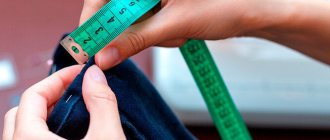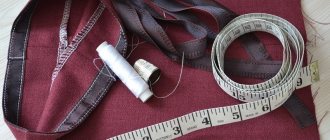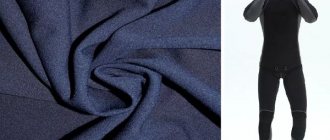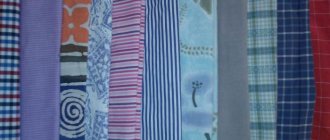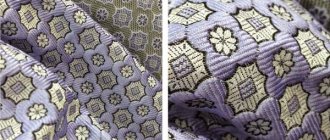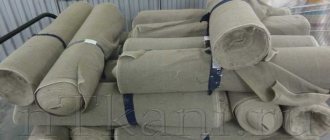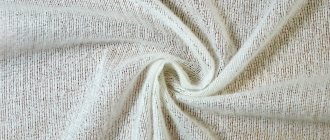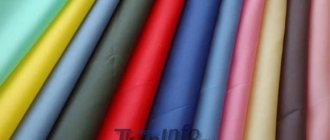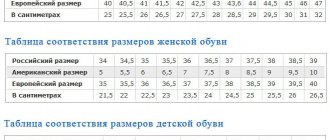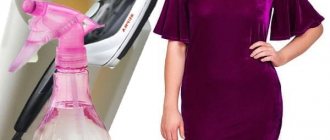What are adhesive fabric and interlining materials used for, and how to use them? Adhesive and cushioning materials such as adhesive dublerin, adhesive fabric and adhesive interlining are widely used in sewing clothes, especially shoulder products. They give additional rigidity and shape to parts or areas of clothing, for example, a collar, flap, cuff, etc. Adhesive materials must be used when sewing a jacket, coat, etc. The front, sleeves, and collar of such clothing must “keep their shape” and therefore the fabric it needs to be “strengthened”, given additional rigidity.
Such materials (usually fabric-based) have an adhesive coating on one side and are therefore called adhesive fabrics. Not only fabrics, but also materials, such as non-woven fabric, can be adhesive.
This video shows how to duplicate three different types of fabric with fabric adhesive. Each type of fabric (suit, cotton, knitwear) requires a special type of adhesive fabric.
You will no longer need to hem the bottom of your trousers or skirt by hand or using a special machine if you use adhesive double-sided “gossamer” tape. Often, to give additional rigidity to individual areas of clothing or parts, all kinds of non-adhesive cushioning materials of varying thickness and density are used.
Types and method of application
The material is made from thin adhesive fibers that randomly intertwine and create a weightless transparent fabric. The web is produced in the form of a tape or roll. The width of the tape varies within 5 cm. The roll available for purchase in regular stores is 90 cm.
The adhesive mesh can be double-sided or single-sided. If you need to hem an edge on a fabric where a seam is not desired, it is better to use a double-sided version of interfacing tape. Single-sided is good for strengthening seams or stiffening clothing parts.
The web can be made on a paper base with weaving in the form of diamonds or without a backing. The interlining material in the form of a mesh is more elastic, so it is recommended to use this option for knitwear. Rolled adhesive tape is suitable for sealing cutouts and hemming thick fabrics.
Similar materials are non-woven fabric and dublerin. They are used to seal and secure the edge of the product. They are all adhesive based. They differ in fabric composition and density. Dublerin is made on a fabric basis. Non-woven fabric comes with a continuous adhesive coating or in the form of dots. Both materials are denser than gossamer, but their adhesive strength is weaker.
What is non-woven fabric
Non-woven fabric is a material made from cellulose, which is why it is often compared to paper. Each manufacturer modifies this fiber in its own way, mainly adding polyester to it, thanks to which the non-woven lining material becomes stronger.
Nonwoven sample
Mostly white or beige fabric is used. However, there is a dyed lining material that is made to match bright fabrics. Depending on the application, cellulose web has different thicknesses. Non-woven fabric is produced in rolls about 100 m long and 30 to 150 cm wide.
Multi-colored interlining
How to use adhesive pad
The principle of fixing the tape is to melt the glue and then harden it. To do this you need to use an iron.
The tape is placed between two layers of fabric and the area is ironed with a heated surface. When melted, the glue connects the parts and secures them securely.
The adhesive strip is used in the following cases:
- when it is not possible to hem trousers or a skirt, but the edge of the product is not processed;
- for minor clothing repairs;
- to secure a patch or applique;
- for sealing decorative cutouts;
- when there is no other way to secure elements of the outfit.
When choosing a material, consider the density of the product and color. The tape can be seen through transparent fabrics.
To work with the tape you will need scissors, pins, chalk and an iron.
Production
Glue is applied to one side of the thermal fabric; it has a rough texture. Application can be continuous, but spot application is more common. The location and size of the dots vary. The choice depends on the characteristics of the fabric being duplicated:
- for thick wool, drape or leather, choose dublerin with large points located far enough from each other;
- for thin ones, take material with small, closely spaced dots of glue.
Useful
The main advantage and distinctive feature of adhesive fabrics from non-adhesive ones is that they do not need to be attached to the parts of the product with pins and then sewn. Their use in sewing is much more convenient.
What kind of glue is used
Synthetic glue can be used on different bases:
- polyamide;
- polyester;
- polyethylene.
When heated to a temperature of 120-160 degrees and contact pressure, they first melt and then harden. They have a good degree of adhesion to tissues and skin and resistance to mechanical stress. Also resistant to temperature (up to 100 degrees, some have heat resistance up to 160 degrees), microorganisms and fungi, oils. That is, during wearing clothes, washing and simply storing them in unfavorable conditions, the dublerin does not come off.
Self-adhesive fabric comes in different densities and widths, black, white or gray. For translucent products, beige is also used.
Hemming light fabrics
If you need to finish the edge of a dress made of thin fabric or tulle, use adhesive web to match the product.
You can do the job by following simple instructions:
- Place the product on a flat surface so that the edge is within your reach.
- Take chalk or soap and draw a line along which you want to glue. Leave a small margin at the bottom of the hem, about half a centimeter.
- Carefully place the adhesive strip along the mark. If the tape is on paper, you need to put the tape so that the paper layer is on top. If you don't have one, use a piece of parchment and place it on the web.
- Run a heated iron over the paper to melt the glue.
- Remove the paper layer.
- Fold as needed. You can secure it in some places with pins so that the fabric does not move out.
- Iron thoroughly.
Advice! If the heating temperature is too high for this type of fabric, use a layer of gauze or cloth. Iron the hem through it.
It is important to consider that the adhesive material seals the fabric. Consider the possibility of its use before starting work.
Some tips
When working and using the product, you must adhere to the following tips:
- Do not subject clothes with cobwebs to frequent washing.
- When washing, water at elevated temperatures is not used.
- The tape compacts the material, which is taken into account before using it on thin materials.
- If the fabric is thin and the iron has an uneven surface, then heating is carried out through additional fabric.
- If the adhesion is poor, the fabric becomes wet.
- For tight joints, apply strong pressure with an iron; for thin joints, vice versa.
- The product is used after the gluing area has completely cooled.
We recommend videos on the topic:
Hemming jeans
This step-by-step guide will help you quickly shorten denim pants without using a seam. Do the following:
- Try on the model and mark the hem with chalk or secure with pins.
- Remove your pants and place them on a flat surface.
- Draw a straight fold line.
- Back off 3 cm and cut off excess fabric.
- Place the ribbon and iron it through the paper.
- Remove the paper. Fold the fabric and iron again.
Ready! Remember! Adhesive tape may lose its properties during washing. It is better to clean such products by dry cleaning or washing them rarely on a gentle cycle. Do not increase the water temperature above 40 degrees.
Which ones to choose?
In the store, among the variety presented, you can get confused. Decide exactly what functions of wallpaper are important in your case, what style you will give preference to in your home and how important the price factor is.
If you are primarily interested in high-quality economy class wallpaper, then pay attention to Russian-made non-woven vinyl. Elite wallpaper can be selected from catalogs and in showrooms in large cities.
Price tags reach up to 100,000 rubles per roll. Coatings from German, Italian and even American manufacturers amaze the imagination with their majesty, brevity and high style. Some premium wallpaper manufacturers depict imitations of paintings by great artists of various eras on their products. To create coziness and chic in the interior at the same time, you can use wallpaper with a textile coating. They have high prices, but their appearance is excellent. Some fabric wallpapers are real works of design art.
Owners of playful pets with sharp claws should not be discouraged either. A modern development - non-woven products for painting, with an anti-vandal coating - this is what you need. Firstly, you decide what shade to give your walls, and over time you can easily change it. And secondly, the increased density in combination with a layer of paint will make anti-vandal wallpaper unusually durable and indestructible.
Plain wallpaper in light shades is suitable for the bedroom. If you want to achieve a bright accent, it is better to choose the wall behind the head of the bed: monograms, large curls, delicate flowers will be spectacular.
A wider range of colors would be appropriate in the living room. Trendy brick, concrete or stone wallpaper will stand out effectively in the loft style. The hall can be decorated with decorative panels with large geometric patterns or stripes.
It is better to choose washable wallpaper without natural coatings for the kitchen. Photo wallpaper will fit perfectly into the dining area. Cheerful landscapes or extraordinary images with one large object will create a mood and a unique design.
For tips on choosing non-woven wallpaper, see the following video.
Repairing torn clothes
To repair a cut fabric, you can use adhesive web and a piece of fabric of the same size. To do this you need:
- If necessary, process the edge of the cut, removing threads and irregularities.
- Align the edges and place the web and overlay on top. The overlay must be placed on the wrong side. If this does not hide the defect, it is better to use an applique or patch from the front.
- Iron carefully, being careful not to move the parts.
This simple method will help you perform minor clothing repairs and save you from trouble.
Features of corner processing
After applying the non-woven base, it is necessary to cut out the part of the required size and configuration. The cutting process is carried out on a flat surface, which will allow you to obtain a product without distortion of dimensions.
To process the resulting corners you need to:
- Take a cotton thread and a needle of medium thickness.
- Place the parts requiring corner joints on a hard surface, right sides facing inward.
- Baste the stitching by hand, retreating one centimeter from the edge.
- Sew the seam using a sewing machine. On corner turns, the machine needle pitch should be minimal to ensure strength.
- The non-woven material is removed from the remaining allowances (1 cm).
- Remove the intended thread.
- Cut off excess material from the corners, leaving 1 mm to the seam.
- Unscrew the corner connection.
- Steam the corner.
Strengthening decorative cuts
A slit in a skirt, a neckline in the neckline or on the back can be beautifully processed using a web tape. Allowances on the armhole or cut can be strengthened using the adhesive method. To do this you need:
- Measure the length of the allowance and cut off the corresponding piece of tape.
- Place the strip into the armhole.
- Iron thoroughly.
Advice! Pre-test the quality of the tape on any unnecessary scrap. If the material does not adhere well even at high temperatures, it is better not to use it and purchase another one. This type of glue will not stick. This can happen if the adhesive material has been stored incorrectly for a long time or is made from low-quality raw materials.
Summarize! Glue web is a universal way to solve many everyday problems related to sewing and mending clothes. It can replace the hem of trousers, hide defects in outfits and seal cuts.
In what cases is it necessary to glue fabrics rather than stitching?
Adhesive materials are used in cases where it is necessary to fasten textile parts without seams. Also, the need for gluing fabrics often arises when sewing, repairing clothes, creating crafts and toys, applying stripes, appliqués and decorations to fabric, performing work using patchwork, quilting, decoupage, and scrapbooking techniques. Adhesive materials are indispensable when joining parts made of difficult-to-process, thin and loose fabrics. They are often used to hem the hems of trousers and skirts, and are especially appreciated by those who sew infrequently.
Gluing two layers of fabric together using adhesive tapes and webs is often used when sewing clothes, especially shirts, jackets and coats. These materials are used as cushioning, which allows increasing the density and rigidity of individual parts - necklines, trims, collars, cuffs, armholes. They also fix and protect seams and cuts from stretch marks, which is especially important when processing knitwear and other elastic materials. Thanks to this, sewn items become more durable and retain their shape better when washed.
